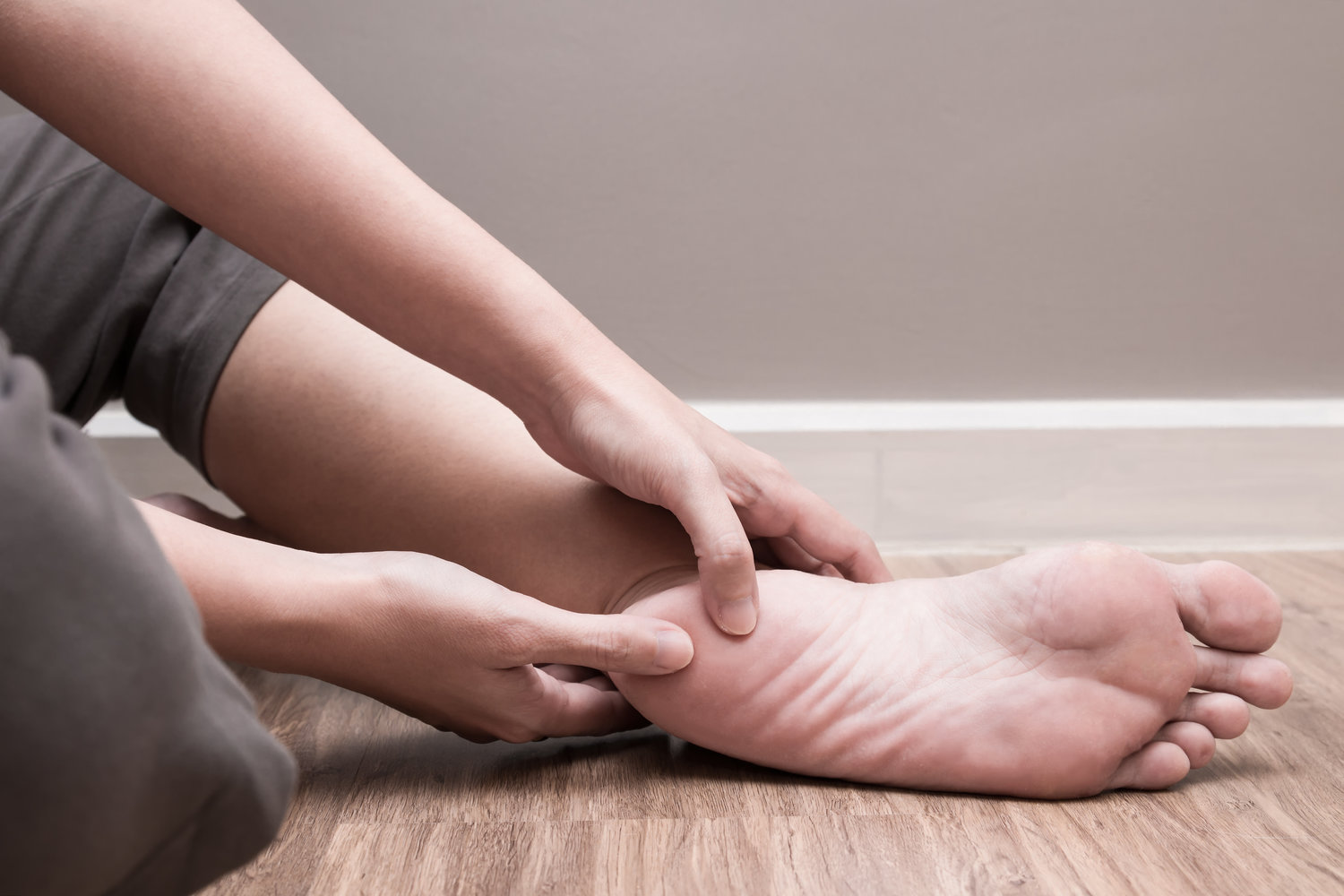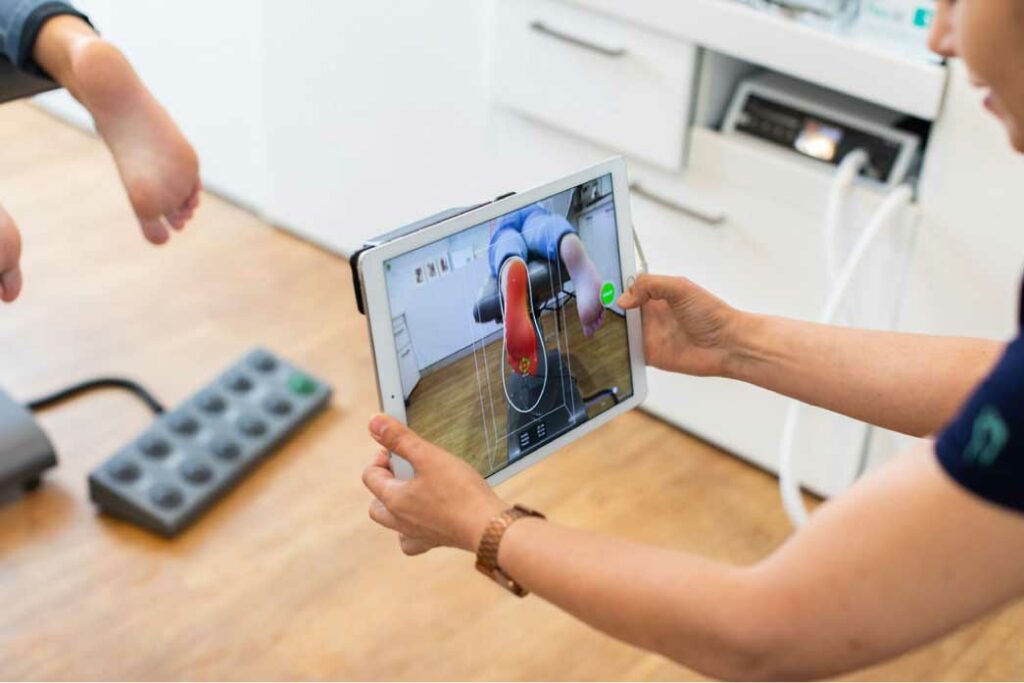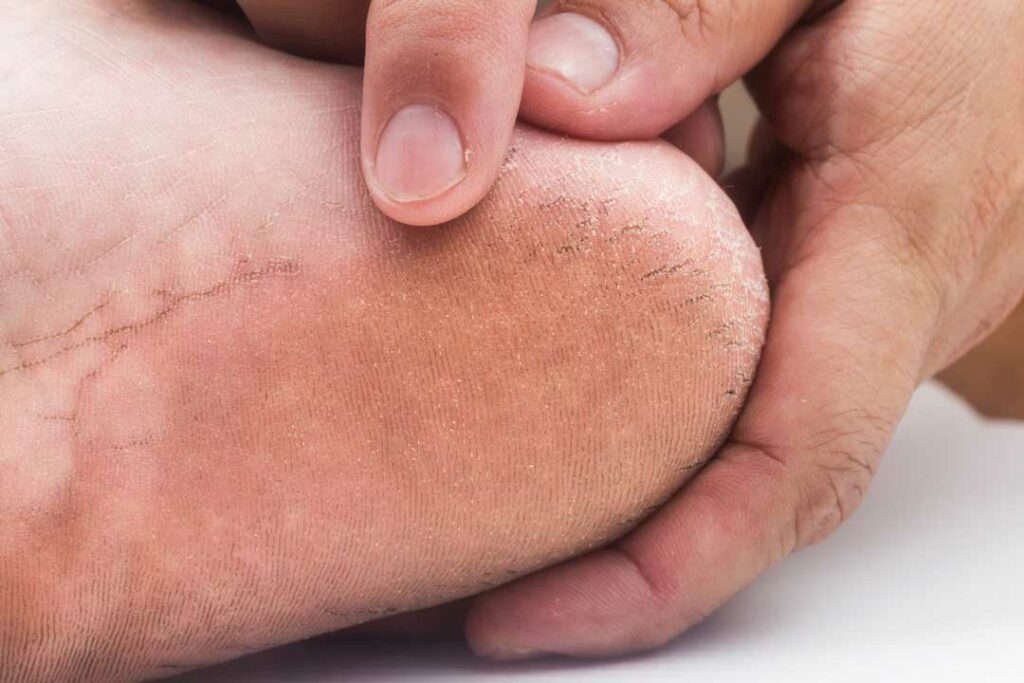4 Common Causes of Heel Pain

‘Heel Pain’ is used to described pain at heel area obviously, but there are actually many different structures in the area that can be the cause. The ‘Heel’ ranges from the back of the heel/foot to the ‘plantar surface’ being the area underneath the heel.
Heel pain is a common and often debilitating condition that affects millions of people worldwide. It is definitely one of the most common complaints I see in clinic. It can range from a mild discomfort to a severe pain and can impact daily activities such as walking, standing, and even sleeping! These are the most common causes of heel pain that I see as a podiatrist:
Plantar Fasciitis:
Plantar Fasciitis can cause pain under the arch of the foot and heel. It occurs when the plantar fascia, a thick band of tissue that runs along the bottom of the foot, becomes inflamed. This inflammation can be caused by a variety of factors, including overuse, flat feet, high arches, and tight calf muscles or poor footwear.
Achilles Tendonitis:
Achilles Tendinitis is an inflammation of the Achilles tendon (the strongest tendon in the body!). It causes pain and stiffness at the back of the heel and into the arch. This condition can be caused by overuse, tight calf muscles, foot biomechanics or wearing shoes that do not provide adequate support.
Heel Spurs
Heel spurs are bony growths that develop on the heel bone, and they can cause pain and discomfort. They can be located at the back of the heel into the achilles tendon (called posterior calcaneal spur) or underneath the heel where it meets the arch (called a plantar calacaneal heel spur). Our treatment aim in treating heel spurs usually focusses on reducing the stress and pressure on the area.
Bursitits:
Bursitis is a condition that occurs when the bursae (small fluid-filled sacs that cushion the bones and muscles) become inflamed. It is characterised by pain and swelling in and around the heel. Most commonly this is at the back of the heel called ‘retro-calcaneal bursitis’.
If you’re experiencing heel pain, there are several treatment option we offer here at Rose Bay Podiatry to get you back on your feet. Some of our treatments include:
- custom foot orthotics
- Changes to footwear
- Dry needling
- Stretching and strengthening programs
- Multidisciplinary care
Heel pain is a common and often debilitating condition that affects many people. Understanding the various causes and contributing factors can be the first step towards effective treatment and relief. Our Podiatrists are always here to help you. With the right treatment, we can manage and alleviate your heel pain, and get back to on your feet with confidence.


Navigating the Complexities of Heel Pain: Understanding Its Common Causes
Heel pain is a widespread issue that affects countless individuals, significantly impacting their daily activities and quality of life. At Rose Bay Podiatry, we’re committed to not only treating heel pain but also educating our patients about its common causes and prevention strategies. Understanding the underlying reasons for heel pain is the first step towards effective treatment and long-term relief. Here are four common causes of heel pain and how our clinic addresses each condition.
1. Plantar Fasciitis
Plantar fasciitis is the most common cause of heel pain, resulting from inflammation of the plantar fascia, the thick band of tissue that runs across the bottom of your foot and connects your heel bone to your toes. Symptoms often include sharp pain that is usually worse in the morning.
Treatment at Rose Bay Podiatry: Our approach includes personalized stretching exercises, advice on proper footwear, orthotic devices to support your arch and reduce strain on the plantar fascia, and advanced treatments like shockwave therapy for persistent cases.
2. Achilles Tendinitis
Achilles tendinitis occurs when the Achilles tendon, which connects the calf muscles to the heel bone, becomes inflamed, often due to overuse. It’s particularly common among runners and middle-aged individuals who play sports only on weekends.
Treatment at Rose Bay Podiatry: Treatment strategies may include rest, ice, compression, elevation (RICE protocol), physical therapy focusing on strengthening and stretching the calf muscles, and custom orthotics to reduce tendon strain.
3. Heel Spurs
Heel spurs are growths of bone on the underside of the heel bone, often associated with plantar fasciitis. They can result from excess strain on the muscles and ligaments of the foot, leading to pain and discomfort when walking or standing.
Treatment at Rose Bay Podiatry: Our treatments might involve physical therapy, orthotic support, and in some cases, laser therapy to reduce pain and inflammation. We focus on addressing the root cause to provide lasting relief.
4. Bursitis
Bursitis of the heel occurs when the bursae, small fluid-filled sacs that cushion the bones, tendons, and muscles near your joints, become inflamed. Heel bursitis can cause swelling, warmth, pain, and stiffness in the heel area.
Treatment at Rose Bay Podiatry: Our podiatrists may recommend rest, ice applications, and exercises to improve flexibility. In some cases, corticosteroid injections are used to reduce inflammation, accompanied by custom-fitted orthotics to prevent recurrence.
Preventing Heel Pain
Prevention is key to avoiding heel pain. Here are some tips:
- Wear shoes that fit well and provide adequate support.
- Avoid excessive running or jumping on hard surfaces.
- Stretch your feet and calves regularly, especially before and after exercise.
- Maintain a healthy weight to reduce pressure on your feet.
Schedule Your Consultation
If you’re experiencing heel pain, don’t wait for it to become a chronic problem. Schedule a consultation at Rose Bay Podiatry. Our experienced team will provide a comprehensive assessment, accurate diagnosis, and a tailored treatment plan to address your specific needs. Together, we can get you back on your feet, pain-free.
